News Release

Canon Inc.
Tsuzuri Project to donate high-resolution facsimile of 'River Festival at Tsushima Shrine' to cities in Aichi Prefecture
TOKYO, July 3, 2018—Canon Inc. announced today that the Tsuzuri Project (officially, the Cultural Heritage Inheritance Project), a joint project organized by Canon and the Kyoto Culture Association (NPO), will donate a high-resolution facsimile of "River Festival at Tsushima Shrine," whose original resides at the British Museum, to the cities of Tsushima and Aisai, located in Aichi Prefecture, as part of the project's Stage 11. The two neighboring cities are home to the festival portrayed in the pair of eight-fold screens.

River Festival at Tsushima Shrine
River Festival at Tsushima Shrine, believed to have been painted during the Edo period (17th to 19th centuries), devotes every available inch of its surface to depicting the Owari Tsushima Tenno Festival, one of the 33 "Yama, Hoko, Yatai, float festivals in Japan" registered as intangible cultural heritage by UNESCO. Found throughout the scenes are such common entertainments of the time as shops and merchants lining the Tenno river, kabuki actors and Japanese puppet theater. Only eight folding screens depicting this festival are said to remain, and River Festival at Tsushima Shrine is considered to be one of the oldest among them. In addition, the work also possesses incredible historical importance as a rare portrayal of a festival that not only was held outside the Japanese imperial court's former home in the Kansai region, but also continues to the modern day.
Today, the original work is preserved at the British Museum as a shining example of Japanese art. Beginning with this latest effort, the Tsuzuri Project has updated the equipment used to create the facsimile, including cameras and lenses, in order to achieve higher resolution than ever before. With the donation of River Festival at Tsushima Shrine, the work may at last return to the cities of Tsushima and Aisai which inspired it.
This facsimile of River Festival at Tsushima Shrine will be on display at select locations in the cities of Tsushima and Aisai from its donation on July 3 through July 29, the day of the Owari Tsushima Tenno Festival. Its residence from July 30 onward will be determined at a later date. The Owari Tsushima Tenno Festival's history spans nearly 600 years, and as one of Japan's three greatest river festivals, is considered one of its most magnificent spectacles.
Visual content related to River Festival at Tsushima Shrine will be viewable on the Canon homepage and at a special display at exhibit locations from mid-August.
About the Tsuzuri Project
The Tsuzuri Project is a social contribution initiative organized by the Kyoto Culture Association and co-sponsored and promoted by Canon with the goal of preserving original cultural assets and creating high-resolution facsimiles. Combining Canon's technical expertise in imaging, processing and output with the master craftsmanship of traditional Kyoto artisans, the Project produces and donates high-resolution facsimiles of such celebrated historical Japanese cultural assets as folding screens, sliding doors and illustrated scrolls.
The Project began in 2007 with two objectives—to donate high-resolution facsimiles of Japanese art abroad to their original owners, and to create high-resolution facsimiles of historical cultural assets that appear in school textbooks for use as tangible educational materials to teach primary and secondary school students about Japan's history, art and culture. Different works have been selected every year since, with River Festival at Tsushima Shrine most recently donated as the Project's 37th facsimile.
For more information, please visit the official Tsuzuri Project website.
Input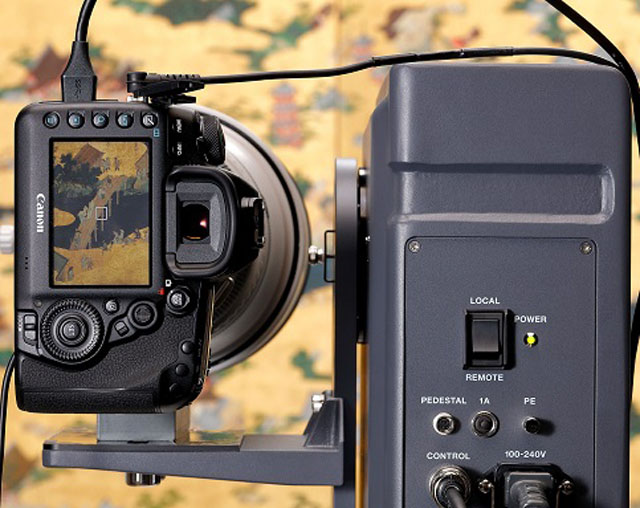 |
Capturing high-resolution digital dataA digital SLR camera is used to capture high-image-quality data for output in the actual size and dimensions of the original cultural artifact. The camera is mounted on a specially designed turntable, enabling it to capture segmented portions of the original work, which are then digitally stitched into a single high-resolution image file. |
Color matching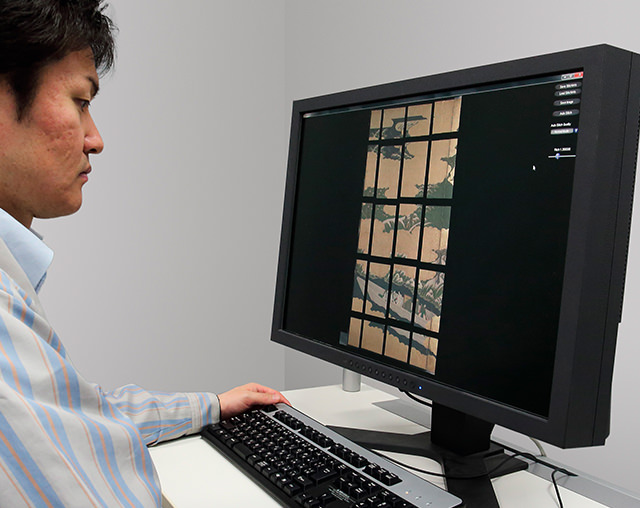 |
Highly accurate color matching systemThe high-resolution data is digitally processed using Canon's proprietary color matching system, which corrects for inherent differences in the lighting environment where the work was photographed. The image is printed and colors are matched on location, helping to minimize both technicians' workload and the wear on the original cultural artifact. |
Output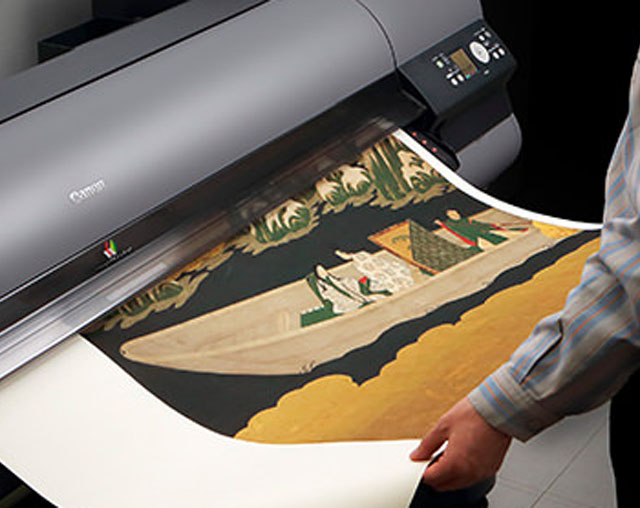 |
World's highest level of printing technologyJapanese art expresses a dimensional depth through its delicate tonal subtleties and shading. These are recreated using Canon's imagePROGRAF large-format inkjet printer, which outputs the data onto washi or silk paper that we have specially designed to be ideally suited for printing facsimiles of the cultural artifacts and applying such finishes as gold leaf. |
Gold leaf, gold paint & isinglass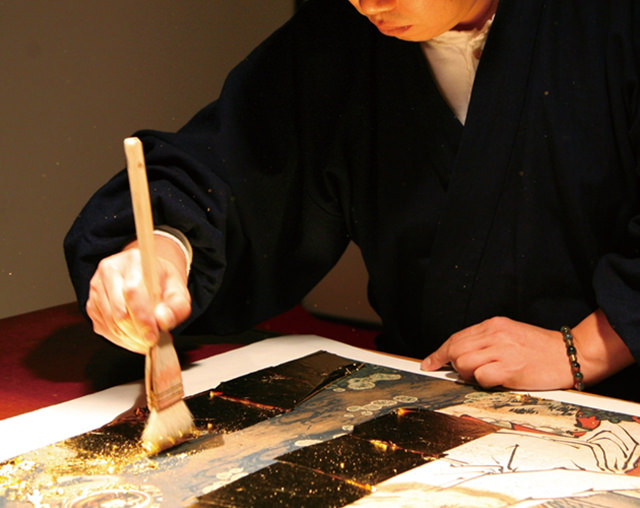 |
Reproduced through time-honored and traditional techniquesAuthentic Kyoto Nishijin craftsmen reproduce the most significant features used in Japanese cultural artifacts—gold leaf, gold paint and isinglass. Special "color fading" techniques recreate the effects that time has had on the gold leaf. |
Mounting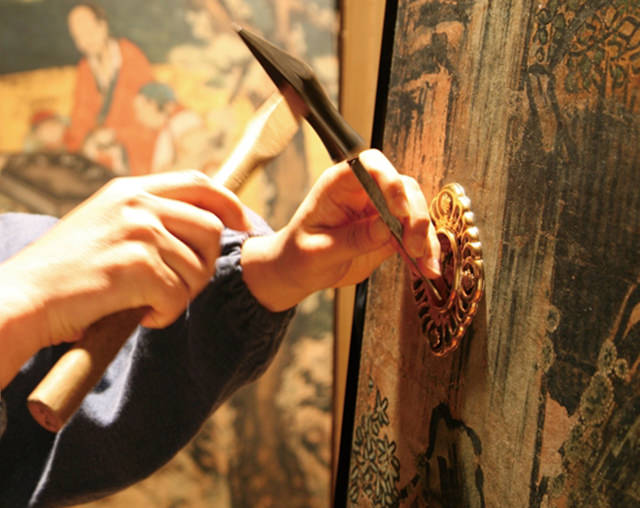 |
A discipline developed in KyotoA master Kyoto framer carefully mounts the output and finished facsimile using traditional Japanese tools. Great care is taken to recreate fading in the metalwork and fabric used in folding screens, while sliding door panels are installed exactly as they were in their original locations. |
